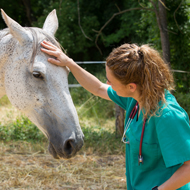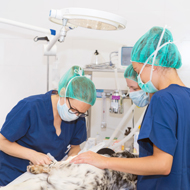Spaying dogs later lowers urinary incontinence risk, study finds
Researchers find 20 per cent drop in risk compared to those spayed earlier.
Delaying spaying female dogs until they are between seven and 18 months old causes a 20 per cent drop in the risk of early-onset urinary incontinence, a new study has found.
The research, conducted as part of the VetCompass Programme at the Royal Veterinary College (RVC), used anonymised clinical records from over 30,000 bitches under first-opinion veterinary care in the UK born between 2010-2012.
From these records, the researchers looked at a random sample of 1,500 bitches, 612 (40.8 per cent) of which had been spayed when they were between three and six months old and 888 (59.2 per cent) of which had had the operation between the ages of seven and 18 months.
They found that the dogs aged between seven and 18 months when spayed had 0.8 times the likelihood of developing early-onset urinary incontinence compared to bitches spayed between three and six months.
Because the two groups studied were balanced across other characteristics including breed, veterinary group, insurance status and chronic illness, the researchers believe a causal link can be inferred.
This method of veterinary causal inference from large databases, which is being developed at the RVC, allows researchers to try to answer questions for which a clinical trial might not be practical or ethical.
Around one in 30 female dogs in the UK are affected by urinary incontinence, and spayed bitches are over three times more likely to experience it.
Previous research by the RVC found that Dalmatians, Hungarian vizslas, Dobermans, Weimaraners, shar-peis and boxers are the breeds most at risk of early-onset urinary incontinence.
Camilla Pegram, a PhD student at the RVC and lead author of the paper, said: “This study is now one in a series using an exciting new approach, allowing us to determine ‘cause’ rather than being limited to ‘association’.
“Spaying is something that every owner and vet will need to consider at some stage and so the findings of this study can feed into spay decision-making.
“Although a decision to spay a bitch is based on many other factors other than urinary incontinence risk, the results suggest early-age spaying should be carefully considered and well justified.”
The study has been published in the journal Plos One.
Image © Shutterstock






 The RCVS has announced a new version of its 1CPD mobile app, with enhanced features for veterinary surgeons and veterinary nurses to record their continuing professional development.
The RCVS has announced a new version of its 1CPD mobile app, with enhanced features for veterinary surgeons and veterinary nurses to record their continuing professional development.
